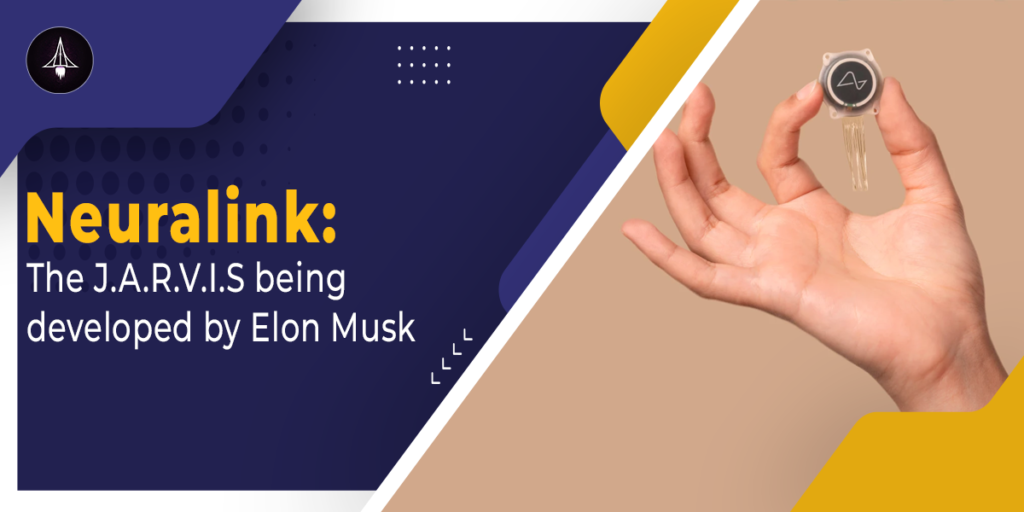Elon Musk announced his ambitious project Neuralink in 2016. It is said that Neuralink – if developed completely – will be a game changer in healthcare and several other fields. Today, Elon Musk through its X account, announced that Neuralink conducted its first human trial. So, in this article, we’ll see what Neuralinks are and what potentials they hold.
What is Neuralink?
Neuralinks are Brain Computer Interface or BCI. These interfaces aim to create a direct link between the human brain and computers, enabling us to:
- Control external devices using only our thoughts. Imagine operating a computer, writing text, or playing games with just your mind!
- Enhance human capabilities such as restoring lost sensory or motor functions, improving memory and cognitive performance, and even potentially treating neurological disorders.
- Revolutionize communication and interaction with technology, opening up new ways to connect with the world around us.
Basically, a BCI is something that can help you talk with computers. For example, all the words in this blog were thought of by me and then typed on a keyboard. But if I had an appropriate BCI connecting me with this laptop, I would just think of the words and it would get automatically typed here. Ofcourse, this is an oversimplification and underestimation of BCIs and BCIs are capable of a lot more.
Currently, Neuralink is developing two main types of BCIs:
- Implantable BCI: This involves surgically implanting tiny electrodes into the brain to record and stimulate neuron activity. These electrodes transmit the data wirelessly to a small external device, enabling communication with computers and other devices.
- Non-invasive BCI: This method uses wearable technology, such as headsets, to capture brain activity through scalp-mounted electrodes or sensors. While currently less precise than implantable BCIs, they offer a non-invasive and potentially more accessible alternative.
How Neuralink Works?
Neuralink’s brain-computer interface (BCI) technology relies on two key components:
-
The Link Implant-
This tiny, flexible device, about the size of a coin, is surgically implanted into the brain’s motor cortex. It houses thousands of ultra-thin threads with electrodes at the tips, designed to record and stimulate individual neurons. These threads weave between brain cells, capturing the electrical signals that encode our thoughts and actions. The implant also has a tiny wireless transmitter that sends these signals to an external receiver.
-
The Neuralink System-
This is an external device that receives the neural signals from the implant and translates them into digital information. Algorithms then interpret this information, recognising patterns and predicting the user’s intent. Based on this understanding, the system can control external devices like computers, prosthetics, or smart home systems or can generate text or other outputs based on the user’s thoughts.
The process can be broken down into four key steps:-
- Neural Activity: Neurons in the brain communicate through electrical signals. As you think or perform an action, these signals increase and fire in specific patterns.
- Electrode Detection: The implant’s electrodes pick up these electrical signals from nearby neurons.
- Signal Transmission: The implant wirelessly transmits the captured signals to the external receiver.
- Data Processing & Interpretation: The Neuralink system analyzes the signals, decoding their meaning and intent.
In simpler terms, Neuralink consists of an implant that reads your thoughts. These thoughts are then converted into electrical signals which are then transferred to an external computer. The external computer then performs an activity. So, if a neuralink implant was connected to my computer, If I had thought of the word A, the implant would read it and would transmit the same to my computer and then my computer would have typed A on the screen.
From Monkey To Human-
Neuralink tested their implants on monkeys. The device was implanted in monkeys and monkeys were capable of doing the following just with their thoughts:
- Controlling a cursor on a computer screen using only thoughts.
- Playing video games like Pong using brain activity.
- Decoding and reconstructing the monkeys’ speech patterns.
But today, neuralink has moved one step ahead by conducting the first human trial. As of today, January 31, 2024, Neuralink has received approval to begin its PRIME Study, the first-in-human clinical trial of its brain-computer interface (BCI) technology. Here’s what we know so far:
What’s involved?
The study involves a small, cosmetically invisible implant placed in the part of the brain that plans movements. The implant records and interprets neural activity, allowing participants to operate external devices through thought control. Participants will undergo rigorous medical and ethical screening, training, and post-operative monitoring throughout the study.
Initial results-
While still early days, Neuralink recently reported promising results from the first human implant recipient. Neuron spike detection, a crucial step for decoding brain signals, has shown encouraging progress.
Impact and future-
This landmark trial represents a significant step towards Neuralink’s vision of restoring and enhancing human capabilities. If successful, the technology could bring life-changing advancements in communication, mobility, and independence for people with various neurological conditions.
Next steps-
The PRIME Study will involve a small group of participants initially, with further scaling-up planned based on safety and efficacy data. It’s a long-term process, but the initial success signals a promising future for Neuralink’s BCI technology.
Ethics-
Neuralink’s progress and future potential are exciting, but come with ethical considerations and challenges:
- Safety and long-term health risks of implantable devices need careful investigation and ongoing monitoring.
- Accessibility and equity must be addressed to ensure this technology benefits everyone, not just a privileged few.
- Philosophical and societal implications of merging our brains with technology raise questions about identity, free will, and the future of humanity.
FAQs:
1.What is Neuralink?
Think “Starlink for your brain” – tiny threads implanted to directly connect your thoughts to computers, potentially unlocking superpowers like telekinesis (controlling devices with your mind) or reviving lost senses.
2.How does it work?
Imagine microscopic robots weaving a neural lace in your brain, recording brainwaves and translating them into digital signals for computers to understand. Like whispering to a machine in the language of your thoughts.
3.What are its superpowers?
Imagine healing paralysis, restoring sight, or even enhancing your memory and focus. Gamers could control virtual worlds directly with their minds, and amputees might regain lost limbs’ feeling. The possibilities are mind-blowing, literally!
4.What are the ethical concerns?
This mind-melding tech raises eyebrows. Who owns your thoughts if they’re digitized? Will it widen the rich-poor gap if only the wealthy can afford it? And what if it messes with our very identity by altering our minds?
5.How far along is it?
It is just in a “prototype stage.” Scientists have tested it in animals, and there has been only one human trial. We’re talking years, maybe even decades, before it becomes mainstream.
6.Are there risks?
Brain surgery’s no picnic, and these implants are delicate tech. Imagine malfunctioning threads or unforeseen brain reactions – yikes! But researchers are working hard to minimize these risks.
7.The future?
The potential is mind-boggling, but the road ahead is tricky. We need to navigate ethical concerns, get regulatory approval, and convince the public it’s safe and beneficial. This brain-computer revolution is exciting, but it’s just the beginning of a long, complex journey.
About us:
SciAstra is a team of scientists and research scholars from the top research institutes around the world, like Oxford, Harvard, Cambridge, and so on. Our vision is to promote critical thinking and scientific temperament by helping students pursue careers in science.
We offer many free and paid courses where our mentors from the top research institutes like IISER, NISER, IACS, CMI, ISI, IISC Bangalore, etc., teach students in live classes, with study materials, mock tests, books, and everything needed. We have taught more than 10,000 students already since 2021 and achieved over 1000 selections with AIR 1, 7,10, 12, and 13 in IISc Bengaluru, IISERs, NISER, IACS, and so on. If you are looking to prepare for IAT / NEST 2024, you can check out our courses and get access to live classes, recorded lectures, study material, mock tests, doubt-clearing classes, and much more!
To know more about us, click here OR download the SciAstra App from the Play Store and App Store!





